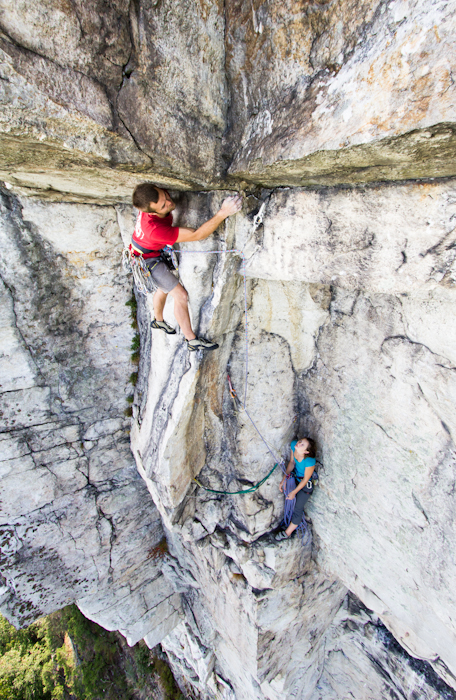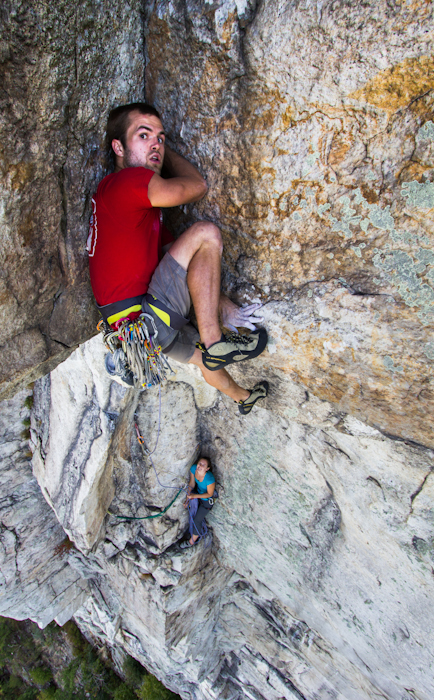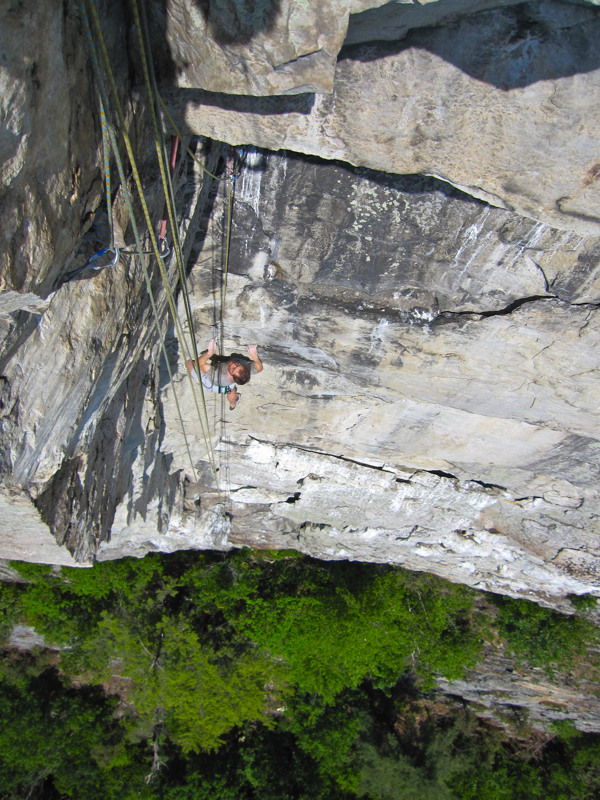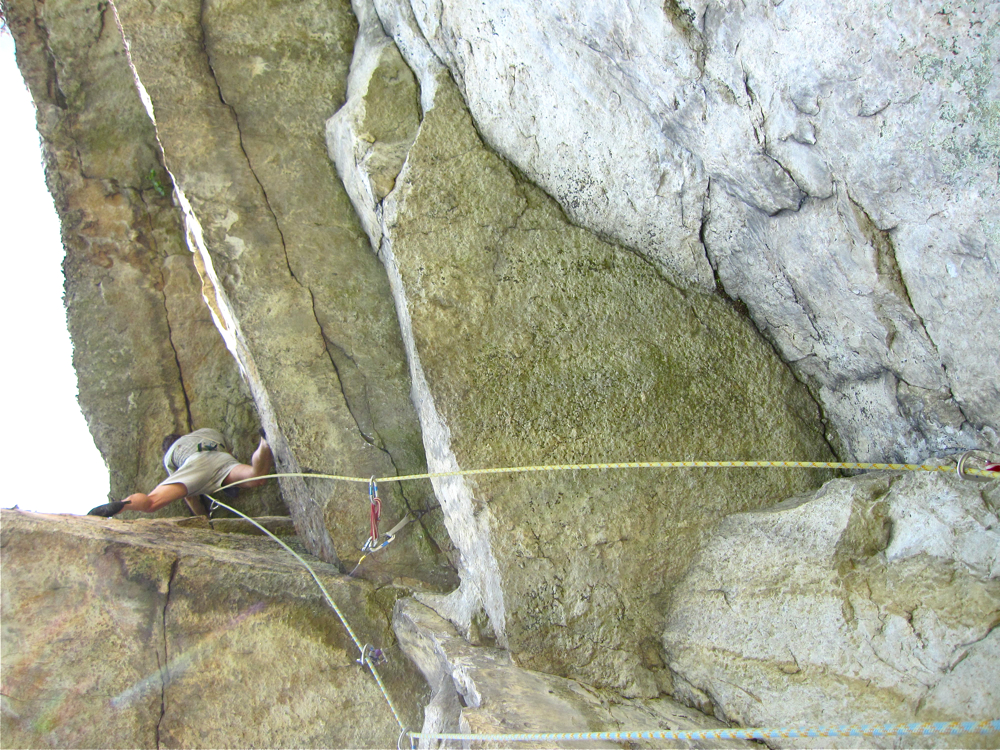White Rose 5.11 5.8X
FA 1977: Rich Romano & Fred Yaculic

Dustin Portzline considers how to get into the 3rd pitch crux corner of White Rose
After an extended time climbing in the Gunks one will notice that there are more right facing corners than left, and on no other cliff is this more apparent than at Millbrook. It is believed that the advance of the Laurentide ice sheet during the last ice age dismantled protrusions from the cliff from North to South leaving behind the solid corners and cracks that have become the dominant features that attract climbers.
The parallel corners of White Rose and White Corner are two such systems. However, where White Corner has multiple vertical cracks for gear White Rose provides only a seam until horizontals in the upper roofs are reached. Thus White Rose has a much more formidable barrier to the harder well protected climbing above, namely the 5.8 run-out above a ledge. Once this section is passed one can once again relax and focus on the difficult climbing with minimal fear of injury.

Dustin Portzline puts body english to good use on White Rose
Once arriving at the first large V-notched roof the challenge rapidly transitions from a game of mind control to one of technique. Corner systems invite stemming, but at times it is mandatory to get your body flush with the cliff and it is here where the hip, body, and shoulders can be used for both a rest and a moment to arrange gear. Sometimes, similar to off-width climbing, these techniques must be employed for upward progress. Rich Romano claims Millbrook has taught him how to climb, and refers to these methods as body english. In the same way that taking a trip to Indian Creek will reward you with the added technique of hand-jamming, Millbrook corner climbs will open your eyes to the subtlety and wide range of uses of body english. You may find yourself returning to the Trapps to see a route you have "wired" actually does not require a race to beat the pump, but rather provides multiple hidden rests along the way.

Rich Romano cleaning up pitch 2
Notice the glacial polish on the outside of the corner
White Rose may conjure up images of an alpine flower encountered en route or perhaps one may think it's a reference to the Nazi resistance group of the same name. However, the origin of this route name stems from neither. One of Romano's early climbing partners was a New York City public school teacher by the name of Erwin Rosenbaum, simply called by his friends as Rose. Rose had a great rapport with his students who were primarily black and as a result of being one of the only white teachers in the school picked up the nickname White Rose.

Rich Romano on familiar terrain 33 years after the first ascent